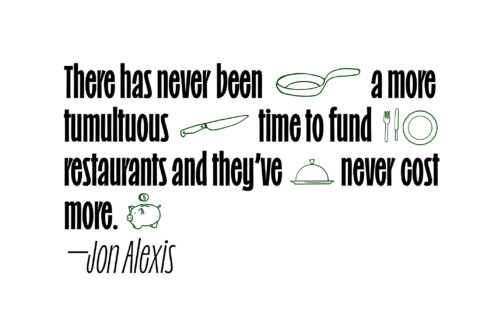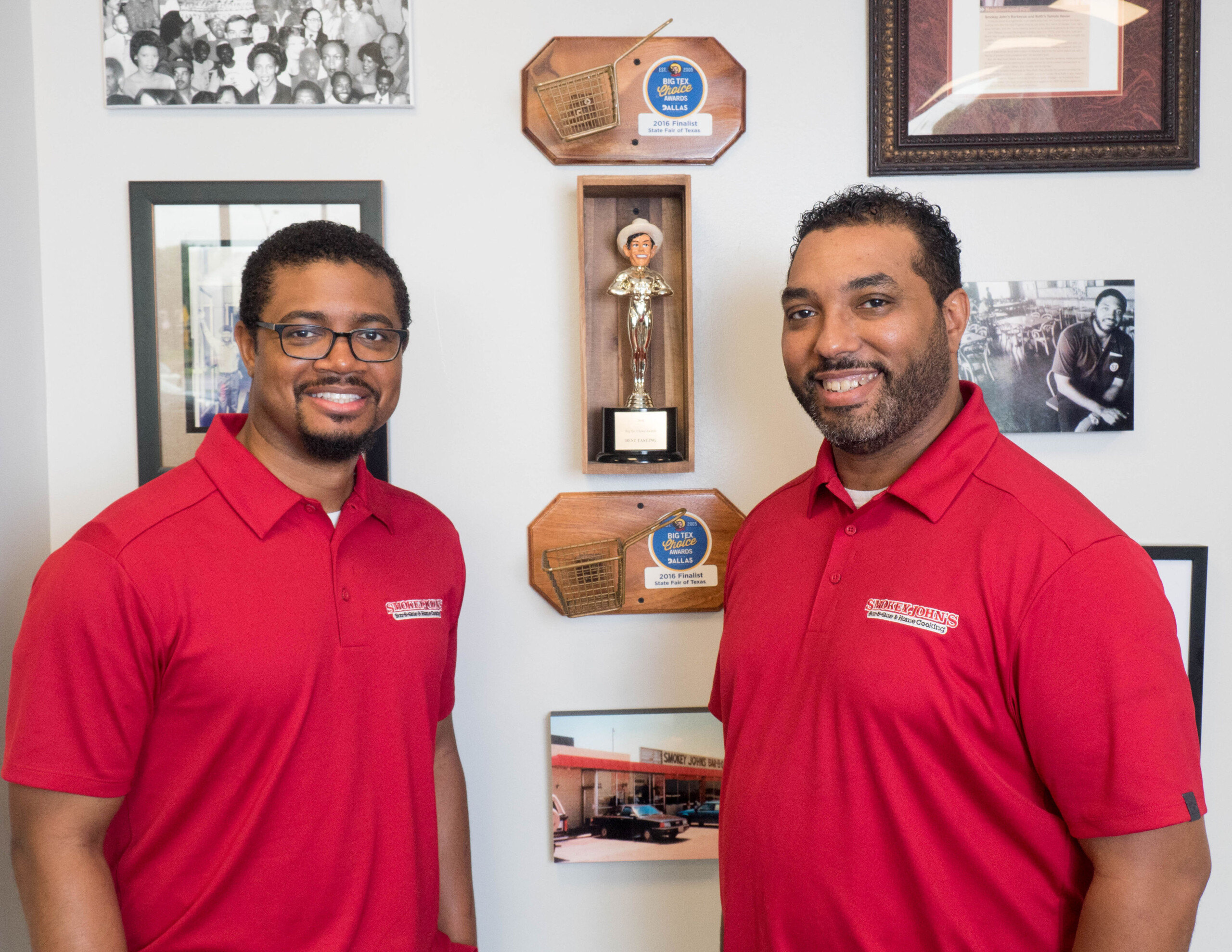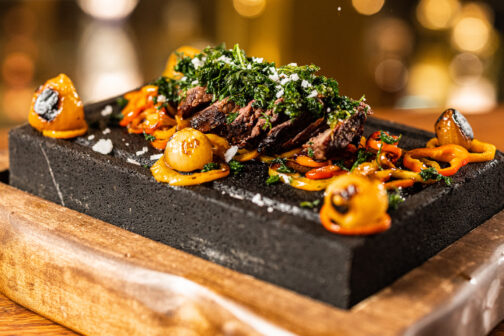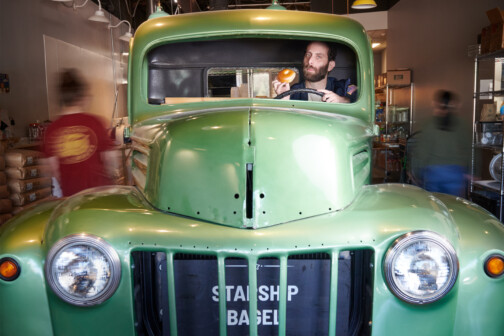Welcome to In the Weeds, our nine-part miniseries in which Dallas restaurateurs explain behind-the-scenes aspects of the food service business—parts of the job that customers never see.
Today we’re talking about all the steps that must take place before a restaurant opens: creating the idea, finding a support network, planning all the details, going through the permitting process, and more. (The challenge of finding a location will be covered in a separate column.)
Meet our experts:
- Sawsan Abublan, co-owner of fast-casual chain Shawarma Press
- Tanner Agar, co-owner of upscale restaurant Rye and cocktail bar Apothecary
- Jon Alexis, restaurateur behind TJ’s Seafood, Malibu Poke, Escondido, and Ramble Room
- J.R. Muñoz, owner of the bars Will Call and Elm Street Saloon
- Khanh Nguyen, restaurateur behind ZaLat Pizza and DaLat
- Brent and Juan Reaves, co-owners of Smokey John’s Bar-B-Q
Here’s what they have to say about all the challenges they faced before their restaurants could even open. (My comments and subject transitions are in italics.)
Starting with the idea
Before anything else, you have to develop your restaurant concept. It’s not as simple as having a great idea.
Tanner Agar: There are only really two types of restaurants. There are location restaurants and there are concept restaurants. So, either I know that I want a cafe-bakery in this location, or I desperately want to build a cafe-bakery, and I need to find a location.
Jon Alexis: From our perspective, it used to be, come up with a concept, find a location for it. Now we’ve kind of changed to find the right location where people need a food hug, and then come up with the food hug.
Sawsan Abublan: Starting your own business, whether it’s a restaurant or anything else, is way oversimplified. All over the media, you see people pushing others: start your own business, be your own boss. It’s so much easier said than done, because no matter how many resources you tap into, starting your own business does not come with a guide or a manual.
Tanner Agar: The first step is, can you prove to yourself that that business model is going to work?
Jon Alexis: It’s not just “dream it up and build it” like it used to be. [After the pandemic,] there’s more of a challenge in, is this even possible to execute? How does it go from a dream to tables on the floor?
Every restaurateur has a certain set of options and resources available. When you’re new, you’ve got far fewer opportunities. When you’re a big chain, you enjoy many more. We spoke with restaurateurs who have been on both sides of that divide, including Khanh Nguyen, whose ZaLat Pizza concept has grown from one location to dozens, and Sawsan Abublan, whose growing Shawarma Press chain is not far behind.
Khanh Nguyen: There are two sides of the restaurant business. Single-unit restaurant businesses are the bulk of the industry. And then you’ve got the other side of the house, which is the machines [megachains]. They’re very different in how you operate, the training you have, the knowledge you have, even the social network. The people who work at the chain side of the business, I don’t think they ever know anything or have any connection to the other side of the business. Your mom-and-pop, your high-end chefs, there is a strong social network between the diners who go to those businesses and a network with the workers who work there. It is almost like two completely different industries.
It was very interesting to me going from one side in that business and having to cross over to the other side of that business. We didn’t start really getting good at things like how do you open a new store until I started hiring folks from the other side. Folks who do this for breakfast.
You see a solo restaurateur put up a new store, they’ll announce it, and it’ll be open in a year and a half. There’s so much you have to muscle through and learn. But on the other side of the house, now, if we run across a second-generation restaurant space [a lease on a space that was previously a restaurant], we can have that open in 45 days. Fully trained, everything. We just gotta get through permitting, and if we get lucky on that, we can open really fast.

Sawsan Abublan: You have to pay for an accountant. I mean, a really good accountant. You have to pay for an attorney to give you legal advice and you have to have HR help even from the very beginning. We were lucky enough to be able to afford a strong support system around us, but this is not something that everybody can do.
And this is where I say starting your own business is oversimplified. There’s a lot of people who can’t afford that, and they are faced with challenges that are bigger than them. Bank backing. How can you provide a business plan when that’s not your thing? Banks want to see big numbers and terms and big words that most of us don’t know how to express.
Jon Alexis: There has never been a more tumultuous time to fund restaurants and they’ve never cost more. Material is up. Rent is up. There’s no discount. Labor is up. Every vendor needing to make up the revenue they lost. It is challenging, not impossible, to raise money.
The devil is in the details
Suppose you have your concept, your backing, and an accountant. Great! Now get ready to make literally hundreds of tiny decisions.
Tanner Agar: After that, of course, it becomes all of the stuff that’s really the most fun. What does it look like, what do we serve? What do we call things? How does it feel? What’s the music?
I think one of the most difficult parts about it is just the sheer number of details. I mean, the number of plate options that you have alone. I think we brought somewhere like 300 wallpaper samples in, books of wallpaper, just for Apothecary. When you extrapolate that out for furniture and fixtures—I have zero desire to ever build a custom house now!
J.R. Muñoz: Then you have to know every single piece of equipment, all the way down to how wide it is and where you can fit a trash can, where you’re gonna put your cups. It’s like Tetris in a way. We’re building this bar 17 feet long, each well is 36 inches long, a trash can is 13 inches wide.
Sawsan Abublan: Finding the right camera system provider, point-of-sale system provider, internet provider.
Juan Reaves: You’ve got to work with, basically, kitchen engineers. When we had to rebuild from the fire, learning about airflow and managing your air pressure—as far as your vent hoods and all that—that has a huge impact on your energy consumption as well as just the efficiency of your equipment. Because of the way that you bring in and pull out the air.
Chefs and investors aren’t the only influences on a restaurant’s final look and menu. Suppliers try to weigh in, too.
J.R. Muñoz: As a bar guy, I can walk into a bar, see their products, and I already know which suppliers came in and sold them that. A lot of them go hand in hand. Tullamore Dew, Milagro, Hendricks gin, and Reyka vodka, they’re all [distributed by] the same company, so they’re gonna push all their brands together.
Pandemics, permits, and red tape
Once you’ve got to the construction stage, the pandemic and supply chain crises introduce their own challenges.
Juan Reaves: Equipment in our industry is very expensive. If we had to go buy a whole new smoker, that’s another $30,000 or more. Our smokers are made from stainless steel and steel prices are through the roof, so the used market gets a little more intense. If someone maybe goes out of business or they’re downsizing or they’re upgrading and they want to sell their smokers, they can get a higher rate. I don’t envy anyone trying to start out from scratch right now. There’s always someone who’s got money that wants to go for it, but the average guy getting a loan to go start a business, barbecue is definitely not the way to go, because the equipment is outrageously expensive right now.
J.R. Muñoz: After the pandemic, everything’s backordered. It took us four months to get table bases. Maybe longer. If you’re building something, you need to stage all your pieces and have them together so you can put everything together right. I’m building another restaurant down the street, a pizza pub. And right now, we’re making sure that we’re going to have all our pieces staged. That way we don’t have a construction crew come in and they finish the floors and then they’ve got to wait three weeks because they’re waiting for A, B, and C.
Tanner Agar: The only thing that got me through, honestly, was [knowing] this is gonna open, it’s gonna be cool, and it’s gonna make money.
Every restaurant owner is intimately familiar with another part of the process of opening: waiting in endless lines for Dallas city permits.
J.R. Muñoz: I’m not throwing the city under the bus at all. I get that we’re in a large city and there’s businesses opening every day. But sometimes it’s real hard for a business owner to open a business because they’re waiting on a permit from the city, a green tag or something, and it might take months. Say you’re planning on opening in March and you don’t get that permit till June. Well, in April and May, you had to pay rent.
I’ve been in that situation a few times where we have a place, we’re not ready to open, and we have to start paying rent. You’re just watching money go down and there’s no way to salvage it until you open.
Jon Alexis: It used to be your rent started based on when you received a permit, if you negotiated it properly. Landlords are now saying that risk is on you. It could be months. How do you budget when your landlord says your rent starts and the permitting office decides to sit on your permit for six months? The challenge right now is time. You can budget for a thing, but if you get it four months late, how did it impact the rest of the budget? We had a vendor who had two different covid outbreaks in their office. That put us a month behind, but what was I supposed to do?
Sawsan Abublan: Every state, county, city, you go down the list and everybody has their own rules. Here we’re in the state of Texas, Dallas County, the city of Irving, and I actually encountered regulations [from] the Las Colinas Association. Irving, they don’t care what your signage looks like on the outside. But the Las Colinas Association says, oh wait a minute, it has to be only two colors, and the copy has to be like this, and the font. If you are not patient, you’ll encounter situations where your application for something is denied because you haven’t really done your homework.
That came down to choosing the right contractor and subcontractor. We really needed to find people who did work in Plano, who did work in San Antonio. Because the rules are different and you don’t want someone to learn as they go with you, right? They have to know to say, wait a minute, in Plano you have to do it this way.
One more thing: even if you have cleared all the regulatory hurdles now, they might still change again later.
Brent Reaves: When we first opened years ago, you didn’t have to have a hood over the smoker. You could take the chimney stack straight out through the roof. Now you have to have a huge hood over the whole smoker, which is almost pointless. It’s barbecue. The stack goes out of the building. But there is fire suppression in there as well. We need larger walk-ins now, so you have to build a walk-in cooler.
Getting the word out
Once the tables are on the floors, the last step is attracting customers.
Tanner Agar: People think if you open up and your food is good, that’s enough. It is not. The marketing of a restaurant in Dallas feels almost more important than what you actually cook. Everyone can name restaurants that are busy, but not good. But it’s hard. If I’m in the kitchen every day, I can’t be taking pictures and posting them to Instagram, trying to call newspapers to see if they’ll come review me. Because I’m ordering onions and chopping them up.
Sawsan Abublan: Google Maps is very strict about verification and making sure this is a legitimate business and not just a made-up thing. They send you a verification code in the mail they have to you have to call them back with.
J.R. Muñoz: That stuff takes forever, Google is just weird like that. [The previous tenant’s] name was on here forever [on Google Maps]. Ever since the pandemic we’ve been closing at midnight during the week. It just felt more comfortable. We have people who come in saying, Google says you’re open till 2 a.m., and I’m like, I’ve been editing that on Google for months!
Get the SideDish Newsletter
Author







